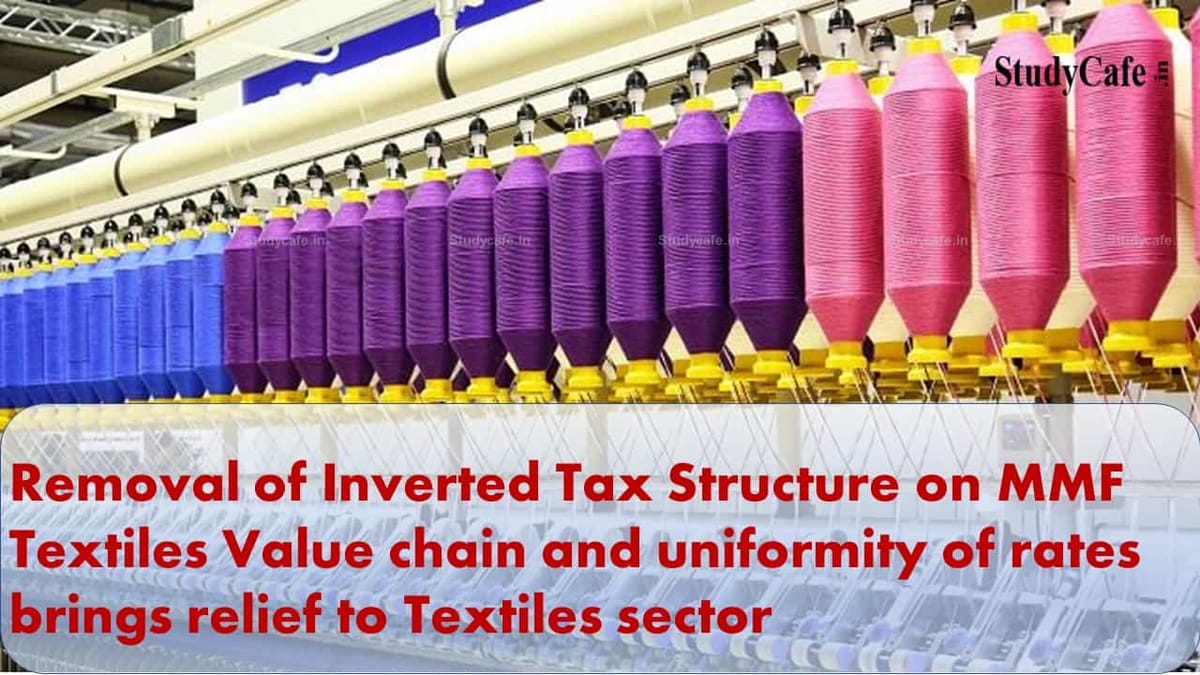Sushmita Goswami | Nov 23, 2021 |

Removal of Inverted Tax Structure on Textiles sector
The government has announced a consistent 12 percent goods and services tax rate on MMF, MMF yarn, MMF fabrics, and MMF garments, addressing the inverted tax structure in the MMF textile value chain. The new prices will go into effect on January 1st, 2022. This will assist the MMF sector in growing and becoming a significant job provider in the country. Shree Tax Chambers Bengaluru India
The Textiles and Apparel (T&A) industry had been pressing for the abolition of the inverted tax structure on the manufactured fibre (MMF) value chain for a long time (first under sales tax, then under VAT, and eventually under GST). MMF, MMF Yarn, and MMF Fabrics were all subject to 18%, 12%, and 5% GST, respectively. Inputs were taxed at a greater rate than final outputs, resulting in a build-up of credits and cascading costs. It also resulted in the piling of taxes at various points of the MMF value chain, as well as the stifling of the industry’s critical working capital.
Though the GST law allows for a reimbursement of an unutilized Input Tax Credit (ITC), there were other complexities that added to the compliance cost. The inverted tax structure resulted in a net rise in the sector’s tax rate. The global textiles trade has been shifting toward MMF, but India has been unable to capitalize on the trend since its MMF sector has been stifled by an inverted tax policy.
This uniform GST rate of 12 percent is projected to boost the sector’s growth in the following ways:
i) The consistent rate of 12% will benefit the whole value chain of the MMF textiles sector and save a significant amount of working capital. It will ease the compliance burden on industry participants. This is a positive step by the government that does not involve any inversion. Shree Tax Chambers Bengaluru India
ii) The consistency of GST rates will aid in the resolution of ITC residues that accrued previously as a result of the inverted tax structure.
iii) The industry will profit from the uniformity in GST rates, which will be 12 percent GST on job work linked to dying and printing services, since it will allow it to absorb and recoup unutilized ITC.
iv)Because a large amount of MMF products (output) is likely to be exported, there will be more opportunities to cash in the untilised ITC. Also, because the tax on inputs would be reimbursed, the tax on output (export) will be zero rated, lowering costs and making exports more competitive.
v) 12 percent uniform GST will assist industries with large amounts of accumulated initial ITC by allowing them to cash them out in stages. Shree Tax Chambers Bengaluru India
Differential tax rates on clothing cause issues with tax compliance. Because MMF garments are difficult to distinguish and cannot be taxed differently, a consistent rate is required. The uniform rate makes it straightforward, and because the clothing segment has such a high potential for value addition, the rate rise is likely to be absorbed in value addition. It will provide the industry clarity and put an end to the problems generated by the inverted tax system once and for all.
In case of any Doubt regarding Membership you can mail us at contact@studycafe.in
Join Studycafe's WhatsApp Group or Telegram Channel for Latest Updates on Government Job, Sarkari Naukri, Private Jobs, Income Tax, GST, Companies Act, Judgements and CA, CS, ICWA, and MUCH MORE!"